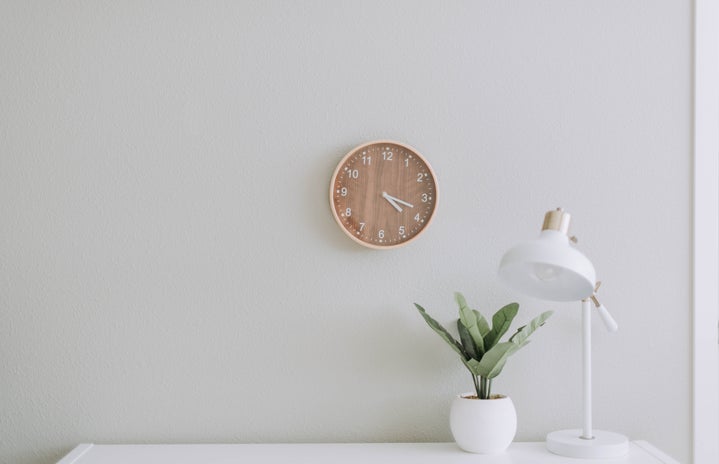Summer internships are a popular option for college students to make some money and get some experience in their field. Most of these positions call for dressy or “business-y” attire, which for most of us probably conjures up images of stiff pantsuits and uncomfortable footwear. As you can probably imagine, such outfits aren’t exactly breezy or light like summer clothing should be. Being that I’ve held several summertime positions over the years, I’ve figured out how to dress appropriately for the workplace without sweating to death. Here are some of my tips:
Pay attention to the tags
An article of clothing may look summery, but if it’s made of a material that doesn’t breathe such as polyester, it will make you sweat like crazy. As the weather gets warmer, it’s imperative that you pay attention to those tags on your clothes that tell you what material it’s made out of. Look for breathable materials such as cotton, rayon, or challis. Not only will they prevent you from sweating, but they’re also typically lightweight and will prevent you from getting hot in the first place.
Layer up
I’ve come to the conclusion that the cardinal rule of being a young professional woman in the 21st century is “one must own 20 or so cardigans, blazers, pullover sweaters, and light jackets”. Growing up in New England, I learned at a very young age the importance of layering in the face of unpredictable weather. In the springtime, it’s often cooler in the mornings and evenings than in the middle of the day, so layering is a smart idea. Pair your dresses with cardigans, or your short-sleeve blouses with blazers for a breezy, adaptable outfit.
Give your ankles room to breathe
Ankle-length pants have been very much in vogue for several years now, and the dressier iterations are typically considered workwear. You may not consider them to be very different from normal pants, but the slightly shorter inseam will keep you so much cooler. If you prefer wearing skirts or dresses, lightweight midi or maxi skirts would work as well. Pair them with ballerina flats or mules for a look that’s both work and weather appropriate.
Let your skirts flow
As a girl with “powerful” thighs, I usually avoid pencil skirts because the amount of chafing that goes on causes enough friction to start a fire. Even if you don’t know firsthand the struggles of being thick-thighed, you should probably be careful wearing close fitting skirts in the summertime. The figure-hugging fabric is stretchy and doesn’t really allow air in, meaning that heatstroke is basically inevitable. Instead, opt for skirts made of more lightweight materials and cuts that don’t cling to you, such as A-line or pleated. Even if you have to wear Spanx or shorts underneath, a flowy skirt will still allow air to get in so you don’t die of heatstroke.
Size up for stiffer numbers
If you absolutely have to wear stiff outfits to your internship, try buying them a size larger than you typically wear for the spring and summer. I was taught by my career woman mother to buy button-down shirts and blazers a size up (if you’re between sizes like I am, buy it in the larger of the two sizes you bounce between) to ensure it doesn’t restrict your movement and to prevent those dreaded in-between button gaps, but I find it also serves to help the fabric breathe so that you don’t overheat. A lot of seemingly “professional” or “dressy” outfits cling to the figure of the person wearing it, causing them to sweat profusely. You can easily make a slightly-too-large button down look more fitted by tucking it into your pants or skirt.
Be careful with sandals
Sandals are most people’s summertime shoe of choice, but whether or not they’re appropriate in the workplace remains rather controversial. They’re considered unsafe in certain settings (such as laboratories), other people feel they look too casual or unprofessional, and some just couldn’t care less. To be on the safe side, pick close-toed and close-backed shoes that still allow the top of the foot to be exposed, such as ballerina flats or espadrilles.


